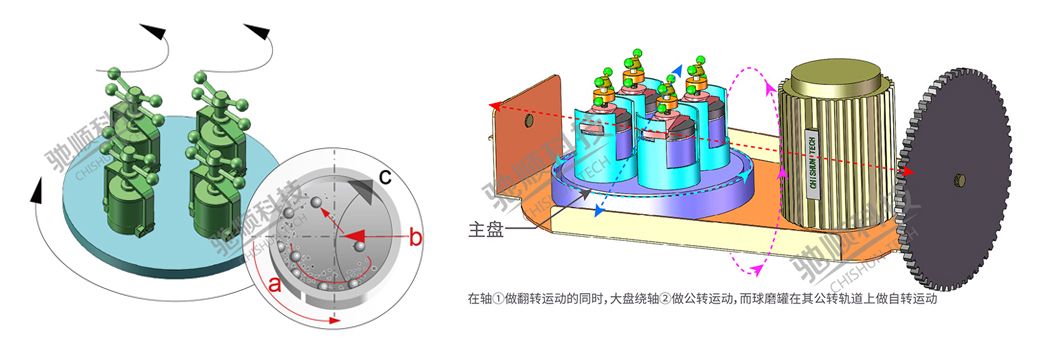Service Hotline
+8613912995166
TEL:+86 25-86795086 58000618
Skype:+86 139 1299 5166
Mobile:+86 139 1299 5166
E-mail:admin@nj-keyscience.com
http://www.nj-chishun.com
What is the difference between planetary ball mills and Multi-angle Planetary Ball Mills?
In daily laboratories, ball milling equipment is an indispensable grinding instrument. Among them, planetary ball mills and Multi-angle Planetary Ball Mills are two highly favored equipment by researchers. Their main function is to achieve refined particle size and uniformity of the sample through operations such as grinding, mixing, and dispersion. So, how do you choose the most suitable grinding equipment for your experiment among these two types of equipment? This article will provide a detailed analysis from the following aspects.

operational principle
Planetary ball mill: Its working principle is to use high-speed rotating planetary wheels to drive the samples in the grinding tank for high-frequency vibration and impact, in order to achieve the purpose of grinding and mixing. This equipment is mainly suitable for rough grinding of samples and for grinding samples with a certain hardness.
Multi-angle Planetary Ball Mill: This equipment is an upgraded version based on planetary ball mills. Its working principle is to drive the grinding tank through planetary wheels for all-round rotation, while cooperating with low-frequency vibration and impact to finely grind and mix the sample. This equipment is suitable for grinding samples with various hardness and particle size requirements.

Application scope
Planetary ball mill: suitable for grinding and mixing various hardness materials such as ores, ceramics, glass, etc. In addition, it can also be used for sample preparation in fields such as battery materials and catalysts.
Multi-angle Planetary Ball Mill: suitable for grinding samples with various particle sizes and refinement requirements, such as nanomaterials, biomaterials, polymer materials, etc. At the same time, it can also be used for modifying and dispersing various materials.
Advantages and disadvantages of planetary ball mills
Simple structure, convenient operation, low maintenance cost, suitable for the basic grinding needs of most samples.
The grinding efficiency is relatively low, and sample preparation with high particle size requirements may not be sufficient.
Advantages and disadvantages of Multi-angle Planetary Ball Mill
With higher grinding efficiency and finer particle size control ability, it can meet various particle size and performance requirements for sample preparation.
The equipment structure is relatively complex, making operation and maintenance difficult and costly.
Selection suggestions
When choosing planetary ball mills and Multi-angle Planetary Ball Mills, the following points need to be considered:
What kind of samples do you need to prepare for your experiment? How hard is the sample? Do we need to meet the granularity requirements for refinement? The answers to these questions will help you choose the grinding equipment that is more suitable for you.
Equipment performance: Both planetary ball mills and Multi-angle Planetary Ball Mill have their own advantages and disadvantages. If your experimental requirements are relatively basic and do not require high particle size, a planetary ball mill may be sufficient; If your experiment requires finer particle size control and higher grinding efficiency, the Multi-angle Planetary Ball Mill may be more suitable for you.
Cost and maintenance: The Multi-angle Planetary Ball Mill is usually higher than that of a planetary ball mill, and maintenance is also more complex. If your experimental budget is limited, or if you don't want to spend too much time on equipment maintenance, a planetary ball mill may be a better choice.
Laboratory space: The volume and occupied space of these two devices are different. If your laboratory space is limited, you may need to consider choosing equipment that takes up less space.
In general, the principle of selecting laboratory equipment that is suitable for you should be: while meeting experimental needs, try to choose equipment that is low-cost, easy to operate, and easy to maintain as much as possible. This not only improves your experimental efficiency, but also reduces the operating costs of the laboratory.

Wechat consulting
Copyright © Nanjing Chi Shun Technology Development Co.,Ltd. Tel:86-25-86795086 58000618 58000718 E-mail: admin@nj-keyscience.com